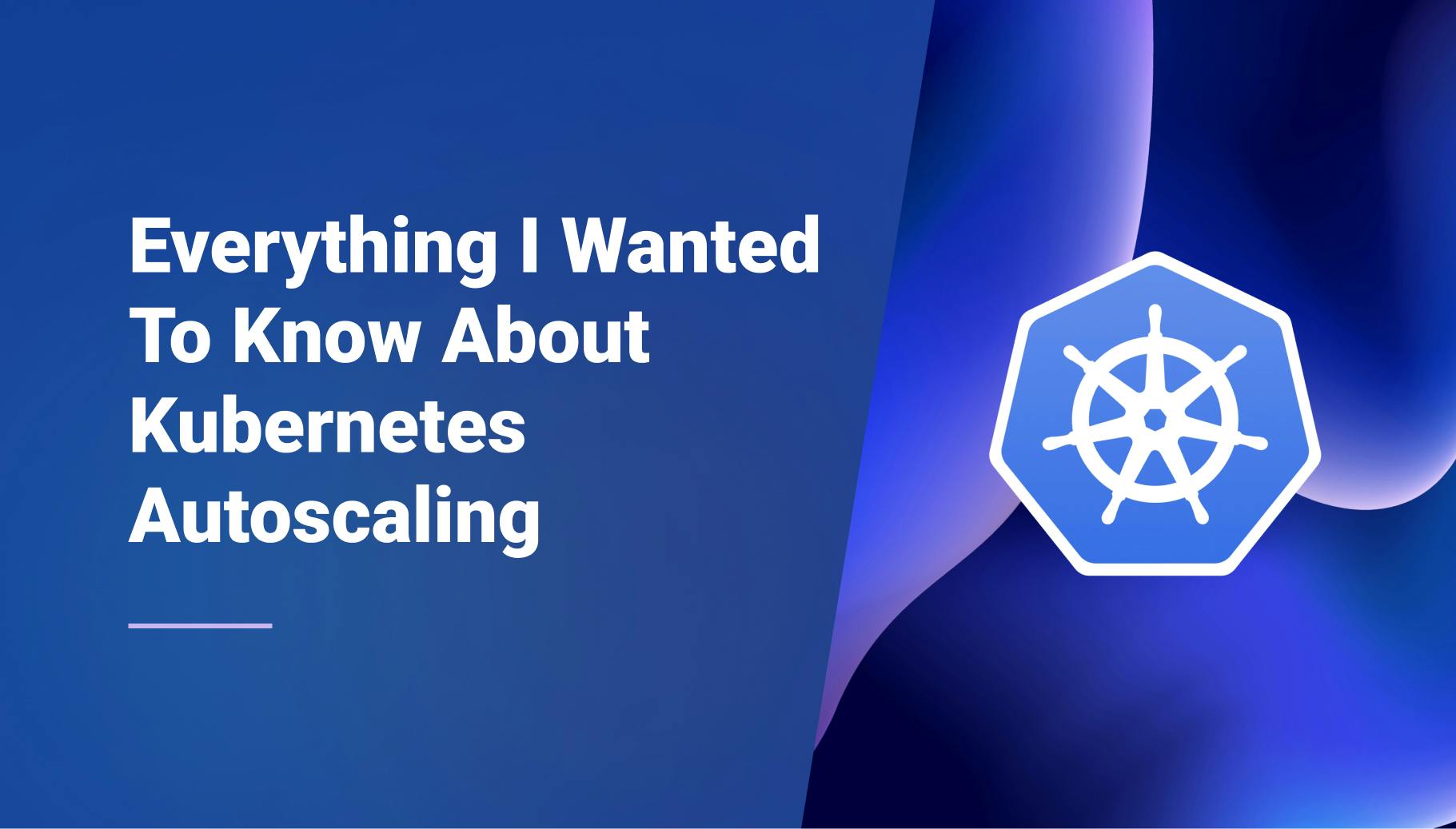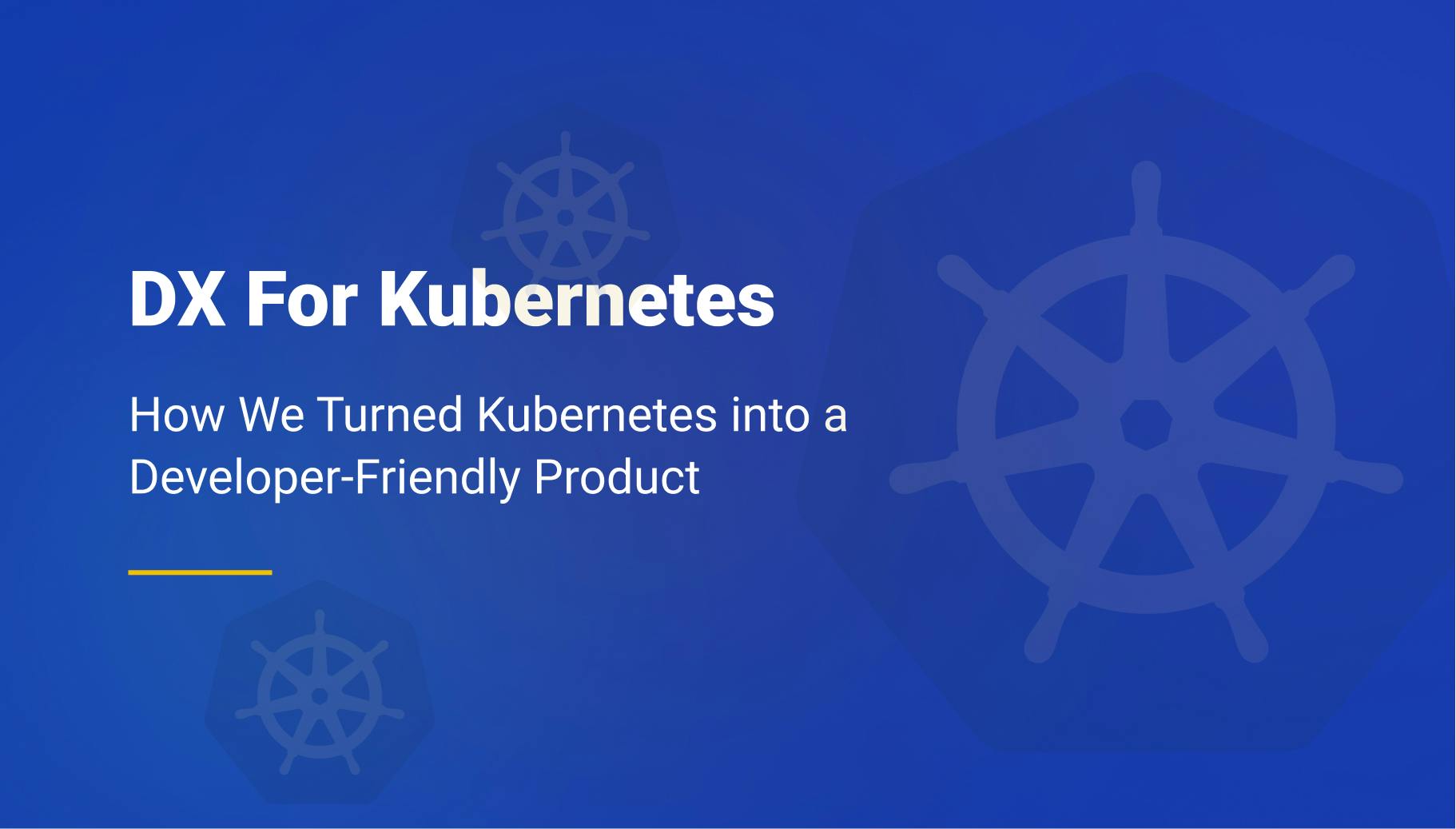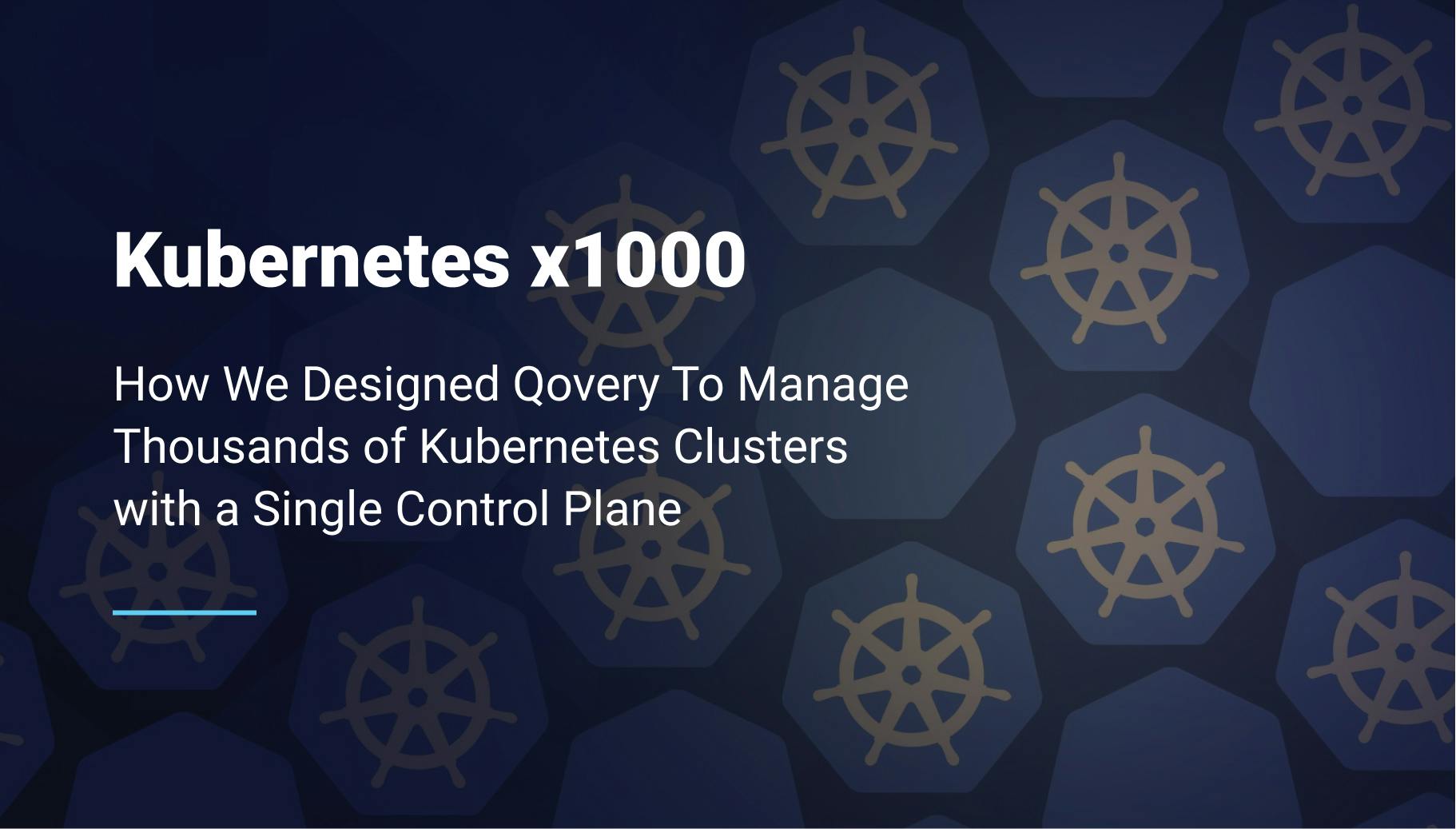10 Best Practices for Optimizing Kubernetes on AWS
As more businesses adopt Kubernetes to manage containerized applications, optimizing Kubernetes on AWS has become a crucial aspect of managing and deploying applications in the cloud. Kubernetes on AWS provides many benefits, including scalability, high availability, and flexibility, but it also poses several challenges that require careful consideration and planning. Today, we will discuss the top 10 best practices for optimizing Kubernetes on AWS, along with the common challenges that come with it. We will also provide solutions to overcome these challenges and introduce Qovery as a solution to simplify Kubernetes management on AWS. After reading this article, you will be in a position to make the most out of your Kubernetes application on AWS.

Morgan Perry
April 6, 2023 · 7 min read.jpg?ixlib=gatsbyFP&auto=compress%2Cformat&fit=max)
Let's start by understanding the basics of Kubernetes on AWS.
#Basics of Kubernetes on AWS
Kubernetes is a super popular container orchestration platform that automates the deployment, scaling, and management of containerized applications. It allows developers to easily deploy and manage their applications without worrying about the underlying infrastructure.
AWS provides two primary options for running Kubernetes: Amazon Elastic Kubernetes Service (Amazon EKS) and Kubernetes on Amazon Elastic Compute Cloud (Amazon EC2). Amazon EKS is a fully-managed Kubernetes service that simplifies the deployment and management of Kubernetes clusters, while Kubernetes on Amazon EC2 provides more control over the underlying infrastructure and is ideal for organizations that require more customization.
Regardless of which option you choose, there are certain best practices that you should follow to optimize Kubernetes on AWS. The next section will discuss the top 10 best practices for optimizing Kubernetes on AWS.
#10 Best Practices for Optimizing Kubernetes on AWS
Here we have shortlisted best practices for optimizing Kubernetes applications on AWS :
#1. Use Amazon EKS or EC2 Kubernetes
Amazon Elastic Kubernetes Service (EKS) simplifies AWS Kubernetes cluster deployment, control, and scaling. EKS handles control plane management, updates, and patching so you can launch and manage applications. Self-managed Kubernetes clusters on EC2 instances require management and maintenance but give you more control over the solution.
#2. Optimize EC2 servers and storage for Kubernetes
The right EC2 instance types and sizes for Kubernetes worker nodes optimize speed and cost. Consider application CPU, memory, and network needs. Configure and optimize Amazon EBS volumes for your workflow.
#3. Auto-scale and load-balance
The horizontal pod autoscaler scales release pods, and the Kubernetes cluster autoscaler scales cluster nodes based on demand. Use AWS Load Balancers (ALB or NLB) with Kubernetes Ingress or Service resources to efficiently distribute traffic among your apps.
#4. Optimize network options for latency reduction and performance
Amazon VPC CNI plugin for Kubernetes lets you give pods VPC IP addresses directly. Jumbo Frames, Enhanced Networking, and VPC Peering can effectively connect multiple VPCs.
#5. Kubernetes Operators automate program deployment and management
Operators launch, manage, and scale complex applications using custom Kubernetes controllers. Use Operators or build your own to manage stateful applications like databases and message brokers in Kubernetes.
#6. RBAC and network policies
Kubernetes RBAC allows fine-grained user and application access. Network policies limit cluster attack surfaces by controlling pod traffic. To limit AWS resource access for worker nodes, configure AWS IAM roles.
#7. Prometheus and Grafana can monitor Kubernetes clusters
Install Prometheus for data and Grafana for visualization. Integrate AWS services like Amazon CloudWatch with Kubernetes Metrics Server to track resource usage.
#8. Serverless container setup with AWS Fargate
Amazon EKS can use the serverless container compute engine AWS Fargate. Fargate automatically supplies and scales compute resources without infrastructure management. This can reduce costs and ease workload management.
#9. Consider Amazon ECR for container file management
Amazon Elastic Container Registry (ECR) works with EKS and other AWS services. ECR stores, manages, and deploys container images safely and efficiently.
#10. Use Helm and Kubectl for easy management
Use Helm for package management and Kubectl for command-line cluster control. Helm charts ease the configuration and deployment of even complex Kubernetes apps.
#Key Challenges and Solutions
#Challenges
When optimizing Kubernetes on AWS, you will come across different challenges, such as:
- Difficulty setting up and configuring Kubernetes clusters on AWS: The control layer, worker nodes, networking, and storage must be configured. For Kubernetes and AWS beginners, this can be complicated and time-consuming. E.g., A user may struggle with Kubernetes networking layer configuration, VPC setup, or instance type and storage selection for their use case.
- Lack of visibility and control over resource utilization: Kubernetes clusters have numerous nodes and namespaces, making resource monitoring and management difficult. E.g., A user may not evaluate how much CPU and memory the application consumes, which can cause performance issues, resource waste, and unnecessary costs.
- Managing multiple Kubernetes clusters across different regions: As companies scale their infrastructure and deploy applications globally, they may need to manage numerous Kubernetes clusters across AWS regions. This complicates uniformity, security, and resource tracking. E.g., An organization with Kubernetes clusters in multiple AWS regions may struggle to maintain a consistent configuration, apply security patches, or monitor resource usage across all clusters.
#Solutions
Handling these challenges is not difficult if you can adopt the following solutions effectively:
- Automating cluster settings with Ansible or Terraform: Infrastructure-as-Code (IaC) tools like Ansible and Terraform make it easy to version, share, and manage Kubernetes cluster setup and configuration. E.g., Terraform lets you build reusable Kubernetes infrastructure modules for consistency and faster cluster creation.
- Prometheus and Grafana for resource monitoring: Prometheus, which gathers Kubernetes cluster metrics, and Grafana, which visualizes and alerts, can improve resource utilization and performance visibility. E.g., You can use Prometheus to gather cluster metrics and Grafana to visualize them to spot underutilized or overutilized resources and optimize your infrastructure.
- Using a management platform like Qovery: Qovery can handle numerous Kubernetes clusters across regions and simplify application deployment, management, and optimization. Qovery abstracts Kubernetes, making it easy to deploy, manage, and optimize applications across numerous clusters and regions on your own AWS infrastructure. E.g., Qovery lets you easily manage Kubernetes clusters, deploy apps with a git push, and optimize with auto-scaling and load balancing with minimal configuration. This simplifies cluster control and lets you focus on application development and optimization.
#How Qovery Can Help Optimize Kubernetes on AWS
Qovery is a platform designed to simplify the deployment, management, and optimization of Kubernetes applications on AWS. Here is how Qovery helps with Kubernetes optimization:
- Qovery's dashboard and command-line UI simplify Kubernetes application deployment on AWS. This interface simplifies program performance monitoring, resource management, and update installation. E.g., Qovery builds and sends updated applications to AWS Kubernetes clusters after a developer pushes code to their Git repository. There is no need for Kubernetes manifest management and deployment script writing.
- Qovery simplifies Kubernetes cluster and application control across AWS accounts and regions. Centralized control simplifies deployment, optimization, and infrastructure security. E.g., Qovery can manage all Kubernetes apps and clusters for a company with multiple development teams and AWS accounts from a single dashboard, ensuring consistent deployment and configuration across teams and environments.
- Qovery automates Kubernetes cluster provisioning and application deployment, letting you focus on app development and optimization. It manages AWS resources, security, and Kubernetes deployments. E.g., Qovery automatically builds VPCs, subnets, security groups, and Kubernetes clusters when deploying an application. It automates program deployment, container builds, and updates.
- Qovery has built-in scaling and load balancing to optimize Kubernetes application speed and cost. It handles auto-scaling groups and load balancers to handle traffic spikes and save money. E.g., Qovery automatically scales your application based on traffic or custom metrics to meet demand without human intervention. Load balancing among various instances improves program performance and fault tolerance.
- Qovery uses best practices and features to secure and comply with Kubernetes apps. Role-based access control, encryption, network segmentation, and interaction with AWS security services like AWS Identity and Access Management (IAM). E.g., Qovery uses role-based access control to restrict Kubernetes cluster and application tasks to authorized users. It configures network segmentation and encryption to secure the stored data and data in transit to meet compliance requirements and secure sensitive data.
#Wrapping Up
Optimizing Kubernetes on AWS is crucial for achieving optimal performance, security, and cost savings. By following the best practices discussed in this article, such as using managed Kubernetes services, implementing security best practices, and leveraging monitoring tools, you can ensure your Kubernetes applications run efficiently on AWS. However, these best practices come with their own challenges, including difficulty setting up and configuring Kubernetes clusters, lack of visibility and control over resource utilization, and managing multiple Kubernetes clusters across different regions. Fortunately, Qovery can help overcome these challenges and simplify Kubernetes management on AWS with its key features and benefits.
Qovery offers a single interface for deploying, managing, and optimizing Kubernetes apps on AWS, including support for multiple AWS accounts and regions. It has built-in support for automation, streamlined scaling, load balancing, enhanced security, and compliance. Combining Qovery with the best practices mentioned in this article will optimize your AWS Kubernetes deployments for speed and cost savings.
If you also want to implement these best practices, Book a demo with our team or sign up to Qovery for free, and see how Qovery can help optimize your Kubernetes applications on AWS!
Your Favorite Internal Developer Platform
Qovery is an Internal Developer Platform Helping 50.000+ Developers and Platform Engineers To Ship Faster.
Try it out now!

Your Favorite Internal Developer Platform
Qovery is an Internal Developer Platform Helping 50.000+ Developers and Platform Engineers To Ship Faster.
Try it out now!


